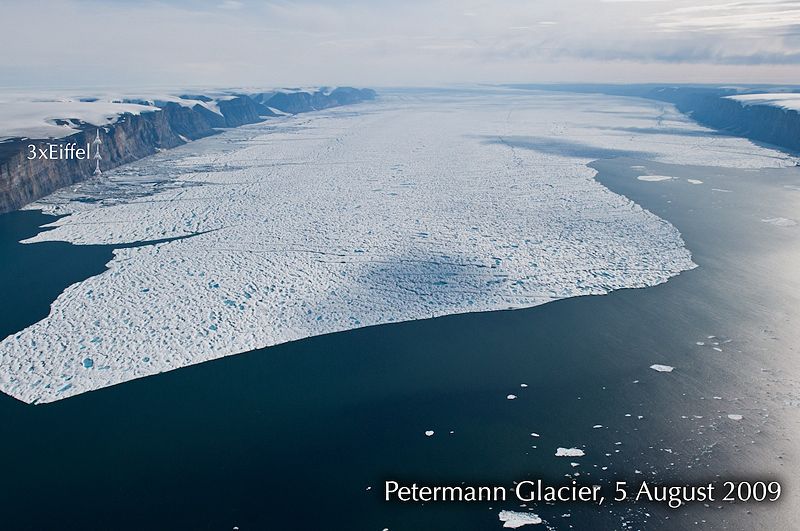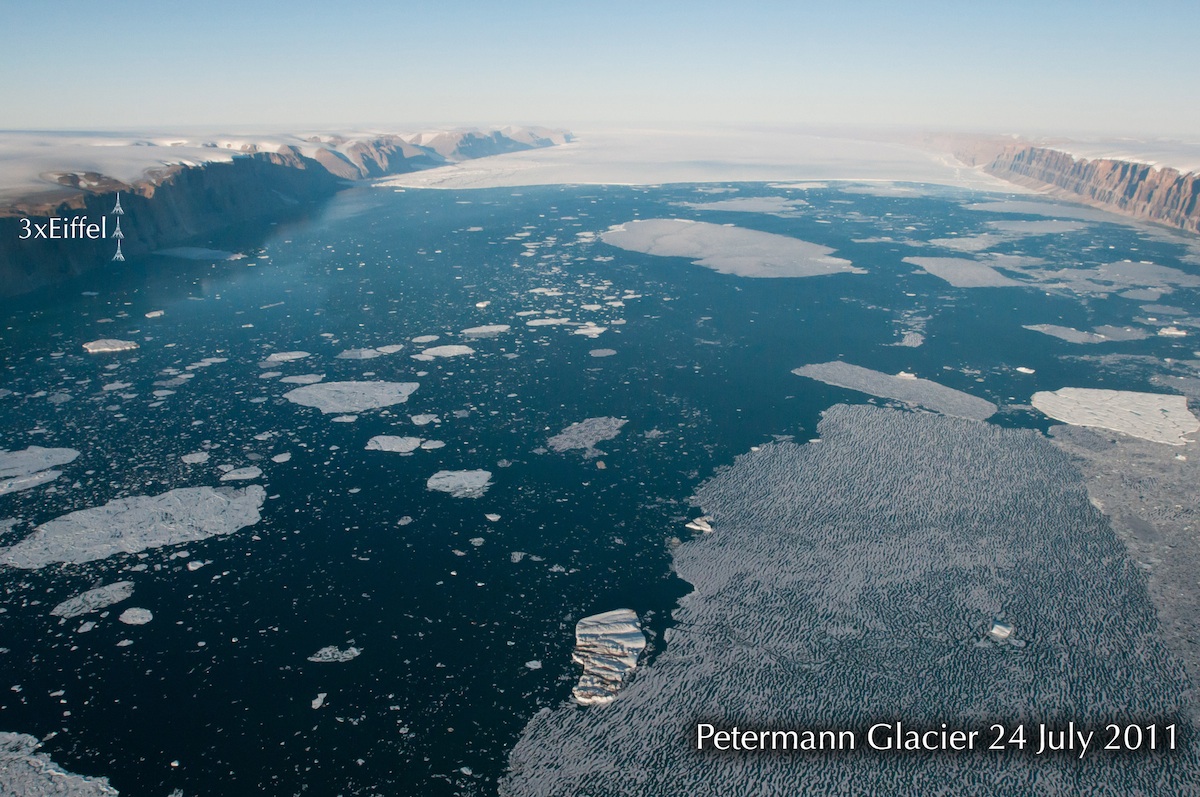Giant Chunk of Greenland Ice Set to Break Away


An ice shelf is poised to break off from a Greenland glacier and float out to sea as an island twice the size of Manhattan, scientists say.
"I don't know exactly when," Jason Box, a climatologist with Ohio State Unversity's Byrd Polar Research Center, told OurAmazingPlanet. "I wouldn’t be surprised if it happened today — or if it happened next summer."
Just a year ago, in August 2010, the same glacier produced an even larger iceberg — a mass of ice four times the size of Manhattan, the largest in recorded Greenland history — yet researchers warn that the next spectacular break could have more-dire consequences.
Box said it's not clear when the 62-square-mile (160 square kilometers) ice shelf, which is dangling from Greenland's Petermann Glacier, will detach from the mainland. "I think it's more likely to occur during periods of melt, and that's coming to an end, so I'm losing confidence it's going to break this year," Box said.
Ice shelves are enormous plates of ice that float on polar seas but are connected to the shoreline by the land-bound glaciers that feed into them.
During much of the Arctic melt season, summer sunlight pounds the Earth's highest latitudes nearly 24 hours a day. Melting typically draws to a close in early to mid-September, when cooler temperatures and shorter days arrive.
Box said scientists first noticed a jagged crack in the glacier's ice — a growing rift he dubbed 'The Big Kahuna' — in 2008. However, a subsequent search through satellite data revealed the rift first appeared about eight years earlier.
Get the world’s most fascinating discoveries delivered straight to your inbox.
"We can see the crack widening in the past year through satellite pictures, so it seems imminent," Box said.
Ice shelf collapse can affect sea levels. Polar research has revealed that ice shelves act as giant floating doorstops for the glaciers that feed them; when ice shelves disappear, the glaciers that push against them speed up, reach the sea more quickly and thus melt faster.
Melting glaciers contribute to rising sea levels, which have wide-reaching effects around the world.
"Even though this is a far-off place, changes in the Arctic do influence the rest of us," Box said, pointing out that rising sea levels can magnify the effects of storm surges and flooding.
Satellite data indicate last year's ice shelf break-off didn't lead to significant glacier speed-up. But this ice shelf appears to be more firmly wedged against fjord walls, thereby serving as more of a restraint. "It seems a lot more likely that this next piece, when it goes, will produce a much larger speed increase," Box said.
The portion of the Petermann Glacier that separated last year is still on the loose. Although greatly reduced in size, the floating chunk of ice remains some 4.3 miles (7 km) long as it lingers near the Labrador Coast. "It is enormous!" Box said, adding that colossal chunks of floating ice can be hazards to shipping traffic and oil rigs.
- Gallery: An Expedition into Iceberg Alley
- Earth in the Balance: 7 Crucial Tipping Points
- 8 of the World's Most Endangered Places
Reach Andrea Mustain at amustain@techmedianetwork.com. Follow her on Twitter @AndreaMustain.



